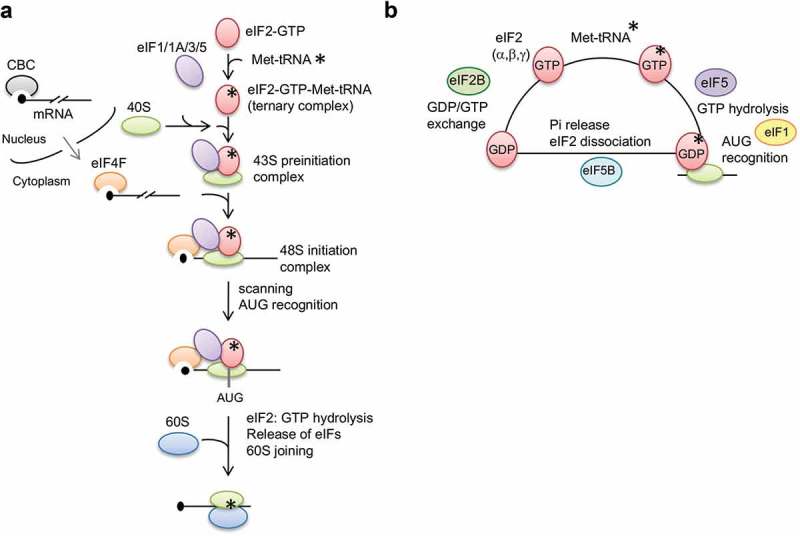Figure 1.

Eukaryotic mRNA translation initiation and initiation factors.
(a) A schematic diagram of canonical translational initiation. The mature mRNA is remodeled from the CBC-bound to eIF4-bound form for steady state translation after being exported to the cytoplasm. eIF2-GTP and Met-tRNAi form the ternary complex (TC). Subsequently, the 40S ribosomal subunit joins the TC to form the 43S preinitation complex (PIC), which is assisted by eIF1/1A/3/5. The 43S PIC is loaded onto eIF4F-bound mRNA to form the 48S initiation complex, which initiates the scanning process. Recognition of AUG stimulates GTP hydrolysis, release of eIFs and joining of 60S for elongation. (b) A schematic diagram of TC cycling. eIF2 consisting of three subunits (α, β and γ) exhibits higher affinity for Met-tRNAi in the GTP-bound state than in the GDP-bound state. eIF5 stimulates the GTPase activity of eIF2 and eIF1 gates inorganic phosphate (Pi) release to ensure fidelity of AUG recognition. eIF5B accelerates the release of eIF2-GDP, which is then recycled to the GTP form by the nucleotide exchange factor eIF2B.
